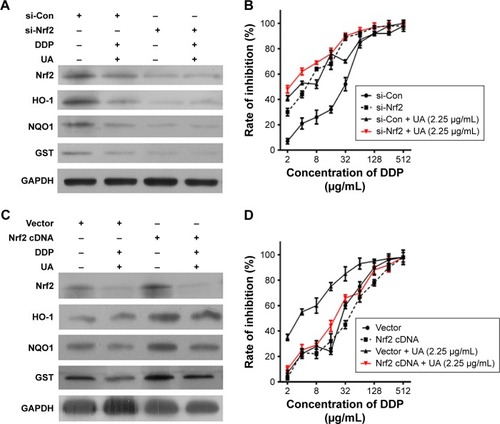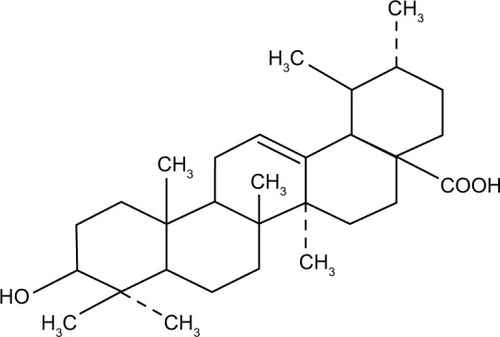Figures & data
Figure 2 Nrf2 was overexpressed in cisplatin-resistant human hepatocellular carcinoma HepG2/DDP cells.
Abbreviations: GAPDH, glyceraldehyde-3-phosphate dehydrogenase; GST, glutathione S-transferase; HepG2, hepatocellular carcinoma cell line; HepG2/DDP, cisplatin-resistant hepatocellular carcinoma cell line; HO-1, heme oxygenase-1; NQO1, NAD(P)H quinone oxidoreductase 1; Nrf2, nuclear factor erythroid-2-related factor 2; SD, standard deviation.
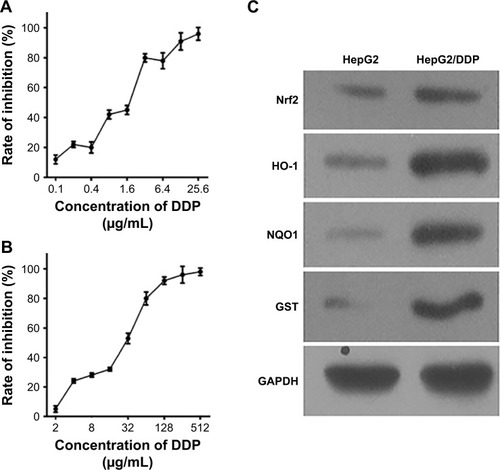
Figure 3 UA potentiates cisplatin-induced growth inhibition.
Abbreviations: HepG2, hepatocellular carcinoma cell line; HepG2/DDP, cisplatin-resistant hepatocellular carcinoma cell line; IC50, 50% inhibitory concentration; SD, standard deviation; UA, ursolic acid.
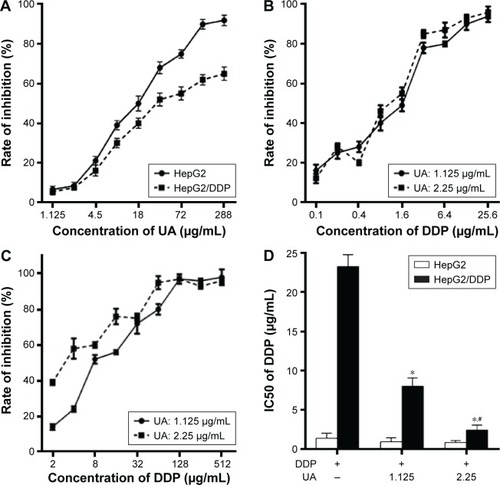
Figure 4 UA–cisplatin combination enhances low-dose cisplatin-induced apoptosis and causes G0/G1 arrest in resistant cells.
Abbreviations: HepG2/DDP, cisplatin–resistant hepatocellular carcinoma cell line; IC30, 30% inhibitory concentration; PI, propidium iodide; SD, standard deviation; UA, ursolic acid.
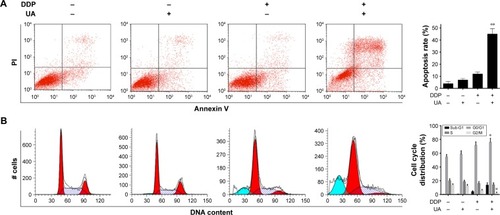
Figure 5 UA–cisplatin combination increases low-dose cisplatin-induced mitochondrial oxidative stress in resistant cells.
Abbreviations: DCFH-DA, dichloro-dihydro-fluorescein diacetate; HepG2/DDP, cisplatin-resistant hepatocellular carcinoma cell line; MMP, mitochondrial membrane potential; ROS, reactive oxygen species; SD, standard deviation; UA, ursolic acid.

Figure 6 UA–cisplatin combination downregulates Nrf2 and its substrates.
Abbreviations: GAPDH, glyceraldehyde-3-phosphate dehydrogenase; GST, glutathione S-transferase; HepG2/DDP, cisplatin-resistant hepatocellular carcinoma cell line; HO-1, heme oxygenase-1; NQO1, NAD(P)H quinone oxidoreductase 1; Nrf2, nuclear factor erythroid-2-related factor 2; SD, standard deviation; UA, ursolic acid.
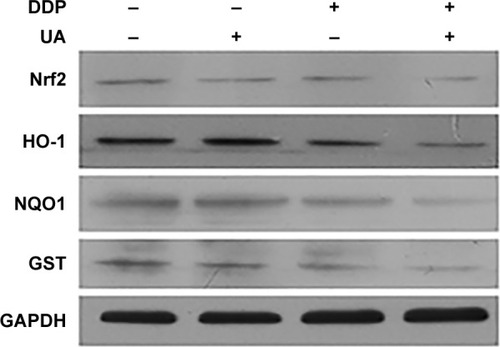
Figure 7 UA sensitizes HepG2/DDP cells to low-dose cisplatin via inhibition of Nrf2/ARE signaling pathway.
Abbreviations: ARE, antioxidant response element; CCK8, Cell Counting Kit 8; cDNA, complementary DNA; GAPDH, glyceraldehyde-3-phosphate dehydrogenase; GST, glutathione S-transferase; HepG2/DDP, cisplatin–resistant hepatocellular carcinoma cell line; HO-1, heme oxygenase-1; IC30, 30% inhibitory concentration; NQO1, NAD(P)H quinone oxidoreductase 1; Nrf2, nuclear factor erythroid-2-related factor 2; SD, standard deviation; siRNA, small interfering RNA; UA, ursolic acid.
